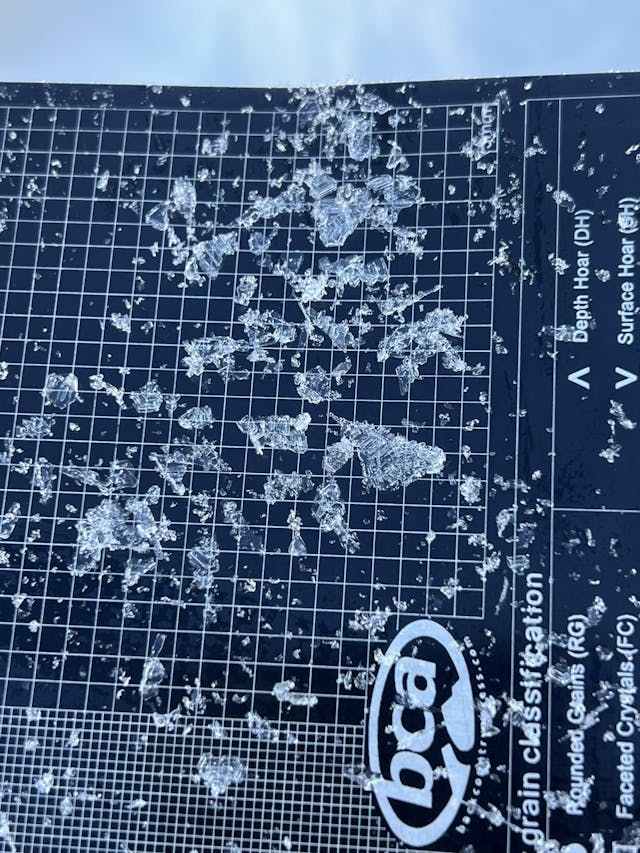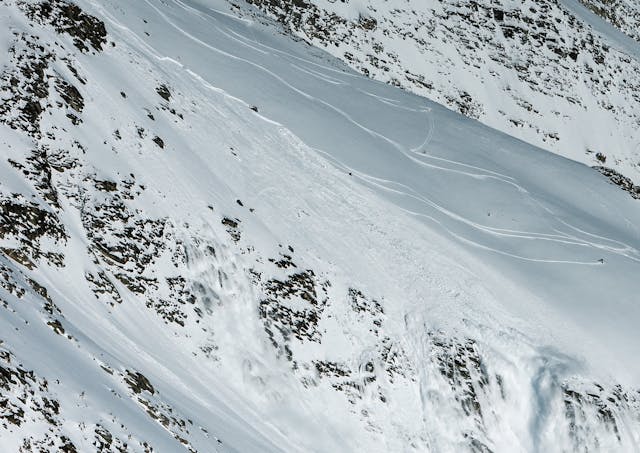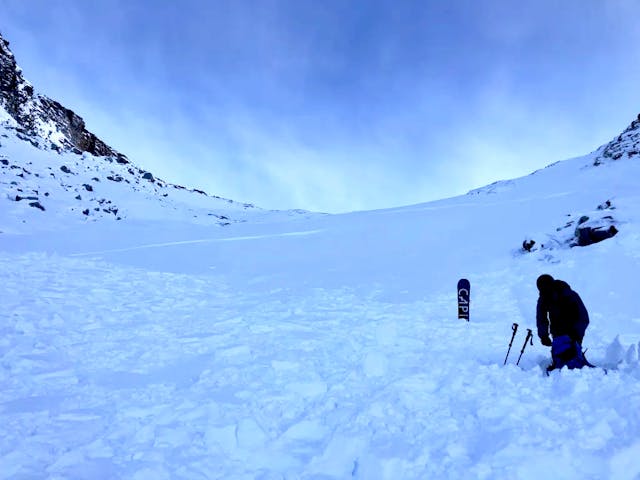- Date
- Friday, December 15, 2023
- Author
- Tyson Rettie, Avalanche Forecaster
The short term forecast indicates great weather for getting out into the backcountry this weekend, but a pesky layer of buried surface hoar is holding us back from “just going for it”. Early last week an atmospheric river brought warm and wet conditions to most of the province. This storm produced mixed precipitation that fell on the large, weak surface hoar crystals that formed throughout western Canada at the end of November. In the most southern parts of the interior ranges, this precipitation was predominantly rain all the way to mountain top. Up north, it only rained at treeline for a brief period. The result is a crust that is inconsistent in its distribution and thickness from one region to another, and that varies by elevation bands.

Evening Ridge, Dec 11. Submitted via the MIN.
In areas just north of the US border, such as the Rossland Range, Kootenay Pass, and St Mary’s area, a robust crust above the surface hoar means that triggering avalanches on this layer is unlikely. However, in the interior ranges north of Nelson and Kimberley, the crust is not stout enough to prevent triggering of layers beneath it at treeline. We have already received some concerning reports of large human triggered avalanches failing on this layer in the Selkirks, north of Highway 1. The majority of these avalanches are occurring above 2100 m, where the crust becomes thin or no longer exists.


Glacier National Park, Dec 12. These images are of the avalanche in this report, taken by Felix Gerz.
The name of the game is continuous assessment, especially as you gain elevation. Just like you learned on your Avalanche Skills Training course, it’s not enough to just read the forecast, you need to verify conditions as you move through terrain. If you notice a near impenetrable crust above this large surface hoar layer, or only a crust where the surface hoar should be, this layer may not be a concern on that slope. If what you are finding is more of a breakable crust, or no crust at all, then that slope may be able to produce large rider-triggered avalanches.
One technique you can use to make an assessment about the presence and quality of the crust is to probe often as you gain elevation. In shallower snowpack areas, you may even be able to use a ski pole by just turning it upside down and using the handle as a crude probe. However, the best way to make your judgments about the crust is to pull out your shovel and get your hands in the snow.
Go outside this weekend and have a good time in the mountains, but don’t let the nice weather lure you into high consequence terrain at treeline. Keep this tricky layer in mind as you gain elevation and, if in doubt, leave that line for another day.
Rutschblock snowpack test from the Selkirks, Dec 1 2023

Glacier National Park, Dec 13. Submitted through the MIN.
